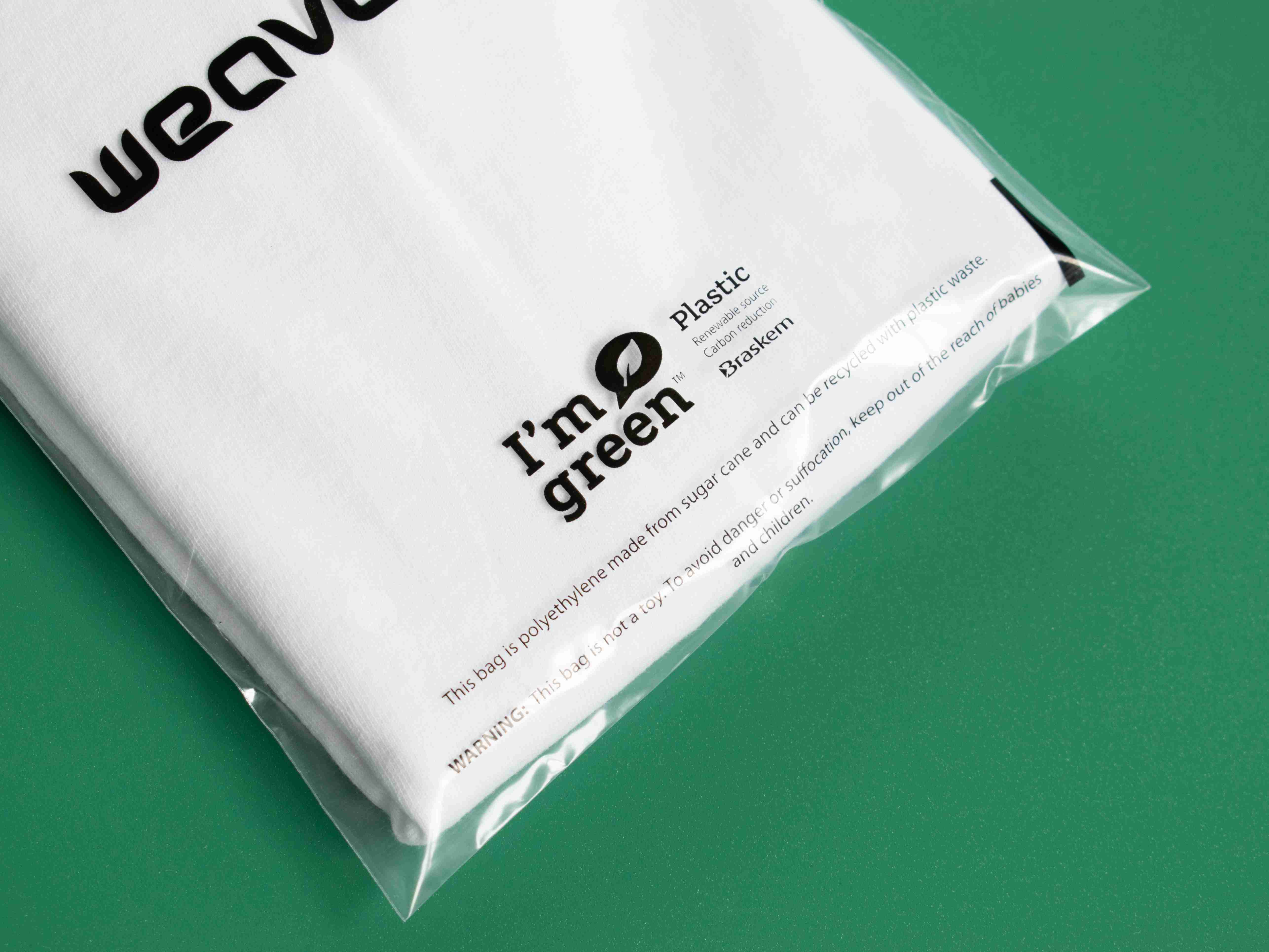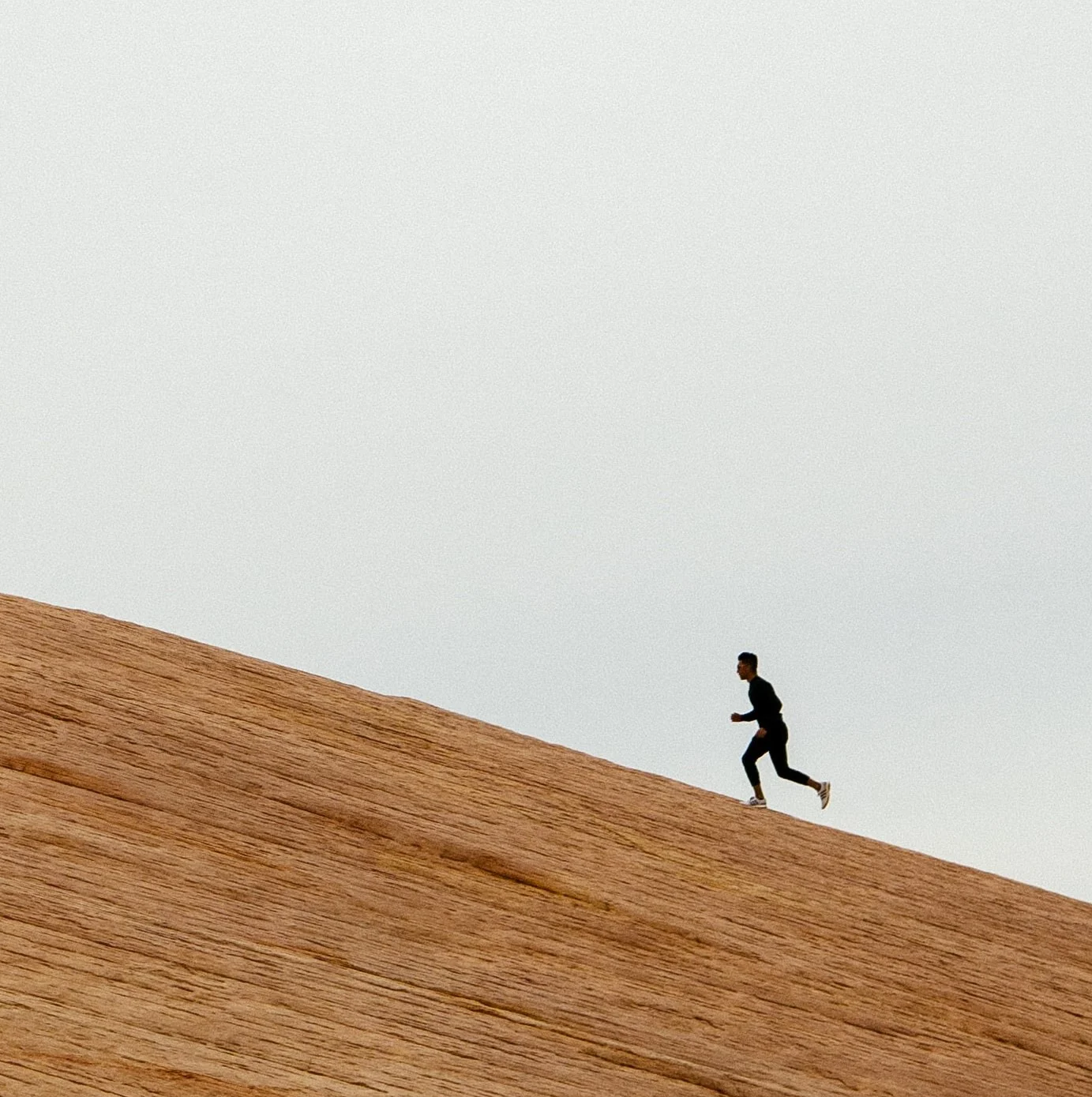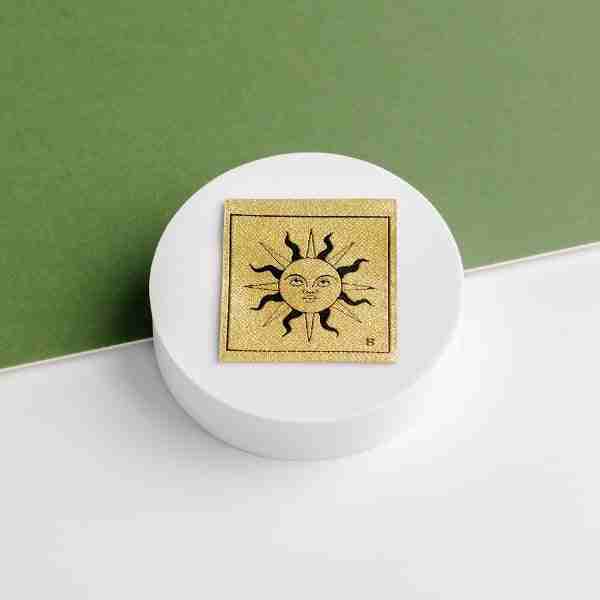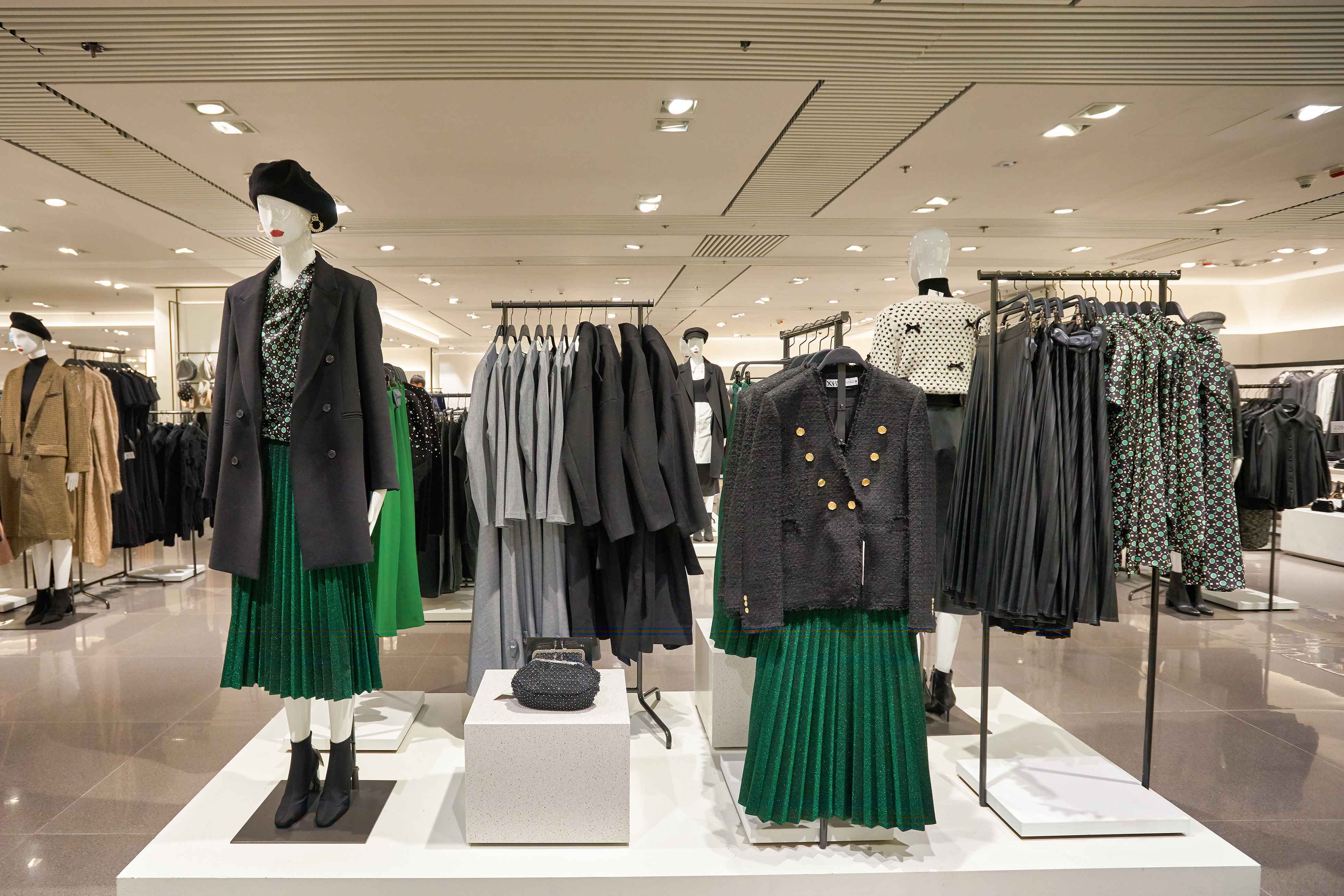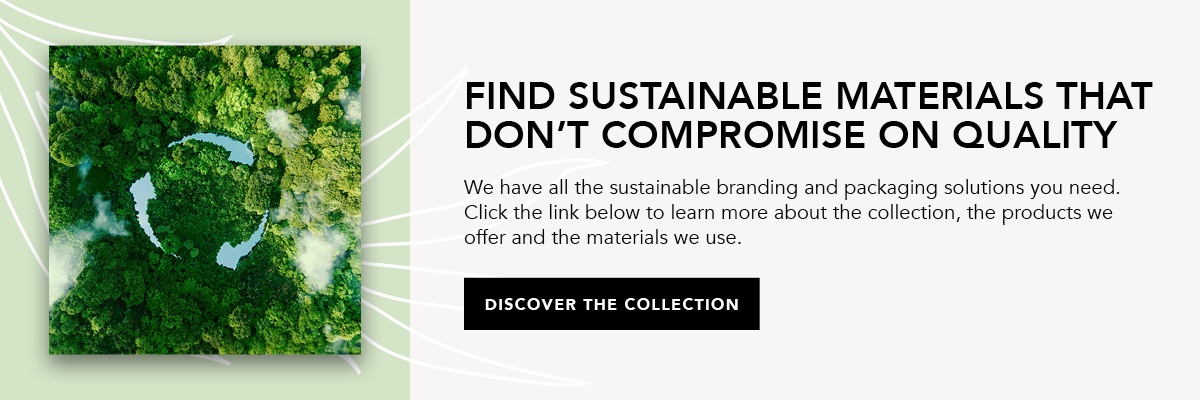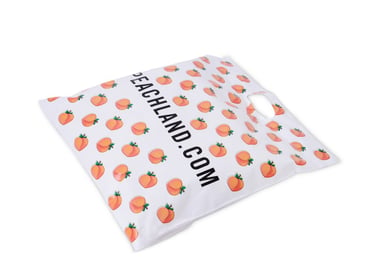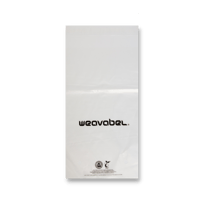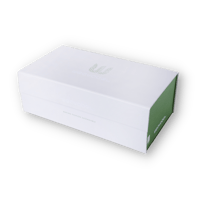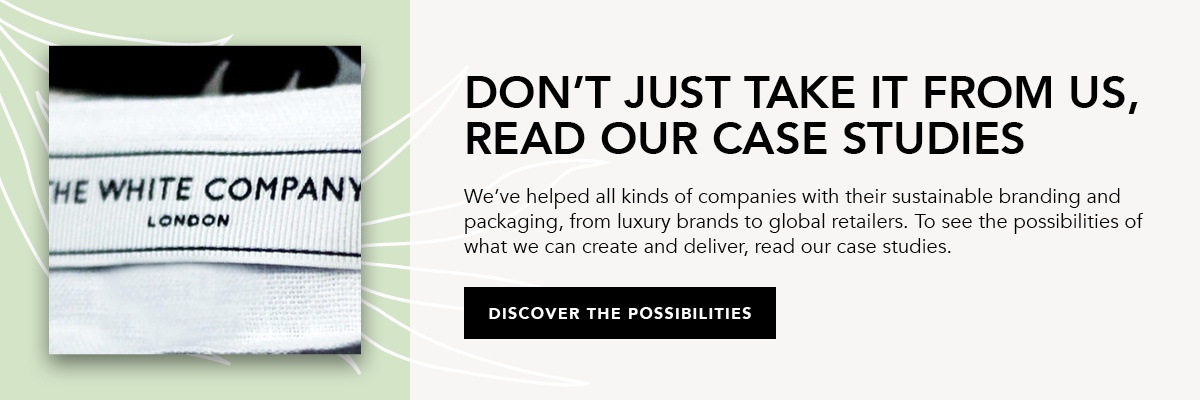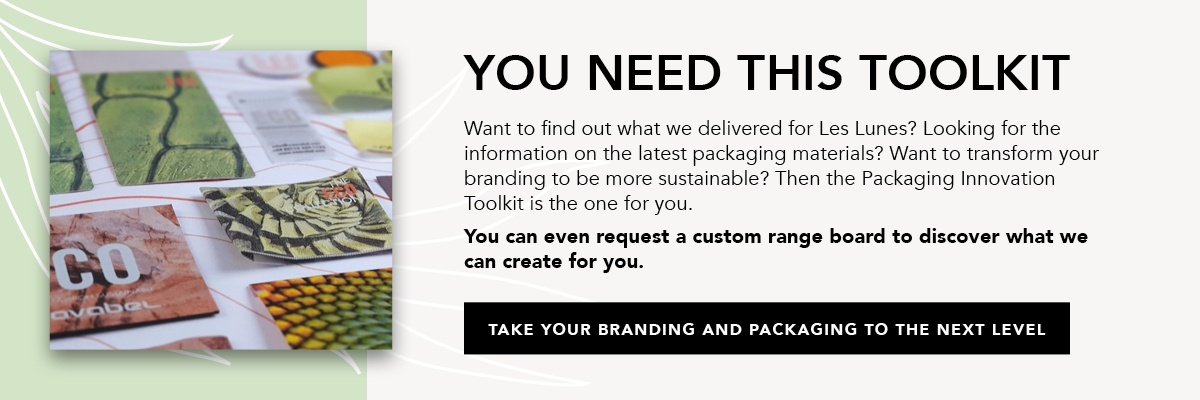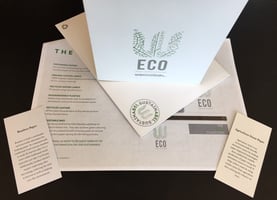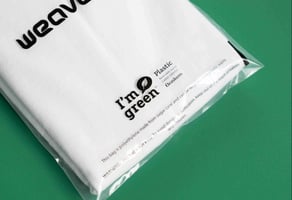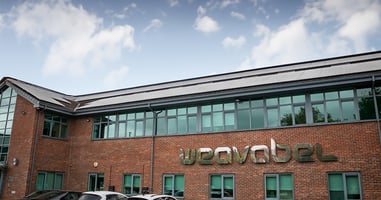10 Sustainable Packaging Trends On Our Radar
It's always worth making sure your packaging is as impressive and eco-friendly as possible. Here are the sustainable packaging trends for this year.

What’s one of the most appealing factors for consumers when buying products? Sustainability. Your customers want to see you improving the environmental credentials of your brand throughout your supply chain.
Whether it’s switching to renewable energy or practising recycling, there are limitless creative bounds to make your brand sustainable while still shouting about its premium quality. How can you make your packaging sustainable and stand out? Here are 10 sustainable packaging trends to watch out for.
1) Designed to Be Recycled
2) Packaging For Packaging’s Sake
3) Replacing Plastic With Innovative Materials
4) Compostable Or Biodegradable Packaging
5) Changing The Ink Up
6) Marrying Premium Quality With Sustainability
7) Reuse with Refillable Packaging
8) Going Eco-Friendly With Textiles
9) Embracing Flexible Packaging
10) Shifting to Mono-Materials
Find Out More About Becoming a Sustainable Brand
1. Designed to Be Recycled
Whether it’s packaging, fashion or technology, everything we design needs to be recyclable if we want to close the loop on waste. To be recyclable, packaging needs to be separable, labelled correctly and clean to be recyclable. Here's a list of fashion startups to look out for.
You also have to implore your customers to recycle these products, which is why they’re made how they are. Consider how your designs can benefit your marketing efforts — are there ways of using recycling as a topic of conversation to engage more people? Good, sustainable packaging choices can increase our thought leadership within an industry. Better for you, better for the planet.
And many brands are doing it. Look at BOXED’s recyclable water bottles. Instead of plastic, they’re made of paper and are fully recyclable. Plus, they're cute, quirky and stand out from the crowd.
However, we can also design packaging for reuse rather than simple recycling. Does it last? Can it be used in the household? Could it be made into compost? These are some important and exciting questions we can answer in our design process to extend the packaging life before it’s thrown away.
2. Packaging for Packaging’s Sake
We’re seeing a revolution in how packaging is designed to remove all of its dead weight. Unnecessary choices regarding packaging products are a detriment to both innovation and the environment.
From 2022 onwards, packaging will be designed to get the most out of the least. In fact, 77% of UK consumers have said brands should use as little packaging as possible.
Created by Hungarian designer Ágnes Gyömrei, the image above is a simple and effective example of how less is more. There’s no plastic and the innovative design allows for easy carrying and storage.
We’ll no longer face reams of bubble wrap once we open a box. We’ll do away with using a huge cardboard box to house a tiny item. Extraneous plastic will be reduced. Packaging is finally going to be streamlined.
Over the last three years, we’ve heavily invested in developing sustainable materials to help brands meet their sustainable needs and goals. With sustainable sourcing, recycling and improved innovations in production methods, we’ve developed our latest premium sustainable collection.
We’ve gone past the styles traditionally associated with sustainability to promote something truly premium without compromising on environmental care. Luxury packaging options are only a click away.
3. Replacing Plastic With Innovative Materials
With an estimated 5.25 trillion pieces of plastic circulating our oceans, plastic is a problem. Brands and packaging specialists are quickly turning their attention to materials that can replace plastic.
For example, the global furniture retailer IKEA has begun trialling packaging made from mushrooms. They announced they would replace styrofoam packaging with MycoComposite — a mushroom-based packaging created by Ecovative.
Eco-friendly packaging such as this will be seen more, protecting the premium products of homeware brands.
4. Compostable or Biodegradable Packaging
What’s more efficient than having one use for packaging? Having multiple uses for it. Compostable or biodegradable packaging is a niche new trend for sustainable packaging. One that allows for a second life for packaging in our gardens.
Since packaging has existed, there have been plastic products that don’t break down. This is a big issue if packaging somehow ends up in a place it isn't meant to be — like a plastic bag on a beach.
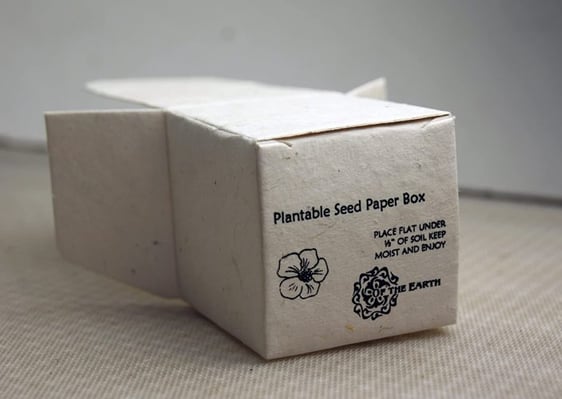
Image credit: In The Bag
Some packaging has even started to contain seeds for wildflowers, so it can be thrown away into your garden, biodegrade and then grow into plant life.
5. Changing The Ink Up
Inks are widespread and effective for printing on any medium, especially packaging. It’s the final stage of your design.
However, in the past, inks weren't the kindest to the planet. Petroleum-based inks can contain volatile organic compounds (VOCs) that aren’t great for the environment. Now, forward-thinking companies and packaging specialists are utilising vegetable and soy-based inks, which have several key benefits, such as:
- They’re biodegradable.
- They’re easier to de-ink during recycling.
- They’re less likely to release any chemicals when thrown away.
These inks are just as vibrant as their petroleum counterparts and are a great and simple way to enhance your brand’s eco-credentials.
6. Marrying Premium Quality With Sustainability
As haute couture brands such as Gucci and Burberry prove to other premium brands that sustainable packaging can be both luxurious and ethical, we’ll see more brands follow this trend.
As innovation in sustainable packaging has developed upon itself over the past years, it’s evident that creativity and design ownership aren't forfeited when creating a sustainable product. This packaging can just as easily represent a premium brand as others did in the past.
Not only are brands choosing to represent themselves, create visual narratives and showcase how serious they are about developing top-quality products, but they’re also working in line with corporate social responsibility. This is a big pull for today’s customers who want to work with brands that care about the planet just as much as their products.
We’ve worked with over 950+ brands to improve the sustainability of their packaging, from The White Company to Clements & Church. Take a look at our case studies to find out how we’ve implemented quality sustainable packaging for big brands.
7. Reuse With Refillable Packaging
An estimated 1.85 billion pieces of plastic leave UK households per week, with only 12% of that likely to be recycled. Implementing refillable packaging is a simple solution to the plastic waste problem. Reusing and refilling bottles, bags or boxes means that the packaging remains in the system and can be used repeatedly.
Using these refillable packaging solutions means that the manufacturing of single-use packaging is decreasing, making the process more efficient in terms of energy, materials and waste generation.
Bath and body brand Molton Brown now offers a refillable service on its hand washes. The 200ml glass pump bottle is durable with a weighted base, meaning customers can use it as often as they’d like.
8. Go Eco-Friendly With Textiles
Growing concerns over reusable packaging have opened up new opportunities for textiles. As seen with brands in the food and beverage industries, lightweight non-woven and knitted materials are increasingly used for wrapping and protection.
These non-woven packaging solutions are as durable as synthetic papers while being lightweight and more sustainable. These textiles are currently used for shipping envelopes, medical packaging and industrial bags.
The use of jute and hessian sacks as packaging has also seen a steady increase, particularly for brands with a heavy focus on environmentally conscious causes, such as those who manufacture rice, coffee beans and potatoes.
9. Embracing Flexible Packaging
Flexible packaging uses non-rigid materials such as paper, plastic, film and aluminium foil, allowing more customisable options. The types of flexible packaging include seal and resealable pouches, microwavable poachers, vacuum bags, liners, wraps and roll stock.
Overall flexible packaging uses less energy and water for manufacturing and transport and has a high product-to-packaging ratio.
However, the Ellen MacArthur Foundation has warned against using single-use flexible packaging. Sander Defruyt, The Ellen MacArthur Foundation's Plastics Initiative Lead, said:
“Flexible packaging is the fastest-growing type of plastic packaging and it is by far the most challenging part of the market to address on the journey towards a circular economy for plastics. As soon as single-use flexible waste is generated, regardless of what it is made of, or where in the world it is used, it is very difficult to deal with.”
10. Shift to Mono-Materials
Simply put, a mono-material is a product made up of just one type of material. These include polyethene (PE), polypropylene (PP), polyethene terephthalate (PET) or polystyrene. While brands have previously favoured versatility over sustainability, mono-materials are much easier to recycle than packaging composed of multiple plastics or mixed with materials like cardboard.
There are plenty of sustainable packaging trends constantly evolving in the industry, and knowing which one is the best for you can be a difficult task.
Find Out More About Sustainable Packaging With Our Toolkit
Maybe you want to start embracing sustainable packaging for your brand, but you don’t know where to start?.? That’s why we’ve created our Packaging Toolkit, full of information to help you make those all-important decisions for a sustainable future. Download it now and take the first steps.

